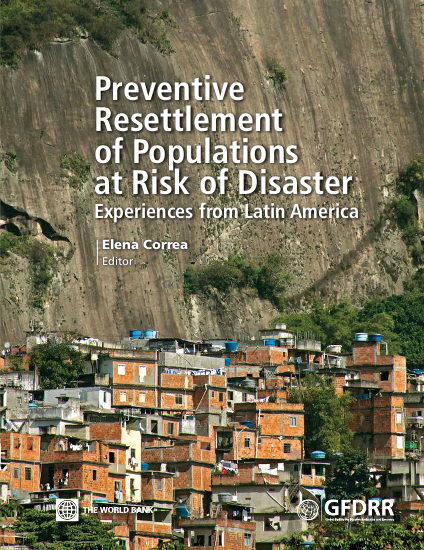
Major disasters since 1985, such the earthquake in Mexico and the Nevado del Ruiz
volcanic eruption in Colombia, have led governments to develop legislative and
institutional frameworks for disaster risk management; these reflect a paradigm shift
from an approach that focuses on emergency responses to one that reduces the risk
factors by incorporating disaster risk management strategies in the development
planning agendas.
Preventive resettlement of at-risk populations is now being implemented, among
other disaster risk reduction measures. This publication, Preventive Resettlement of
Populations at Risk of Disasters: Experiences from Latin America, presents case studies
illustrating how various countries have incorporated this measure in innovative ways.
Through examples included in this book, practitioners can compare the advantages
and disadvantages of various resettlement alternatives, as well as learn how institutions
have been organized and community awareness raised, the types of sources of financing
obtained, and how reclaimed areas have been controlled, providing important lessons
for future interventions.
Resource collections
- Topics
- UN Habitat - Urban Response Collection
- Urban Response - Urban Crisis Preparedness and Risk Reduction
- Urban Response Collection - Community Engagement and Social Cohesion
- Urban Response Collection - Economic Recovery
- Urban Response Collection - Environment and Climate Change
- Urban Response Collection - Housing, Land and Property
- Urban Response Collection - Urban Crisis Response, Recovery and Reconstruction
- Urban Response Collection - Urban Resilience
